

 Wines for women?
Wines for women?
Recently, I heard about a survey about the alleged different tastes of men and women in wine. The report apparently killed that myth (but I have not read it myself).
Anyway, we hear every so often wine producers mention a wine as “this is a wine that women like.” It is the mostly the somewhat older wine producers who say it, so maybe the description is on its way to become extinct. It is never used about powerful muscular wines but rather a little lighter wines. Does he (always a man) know from his own experience that women like this wine or is it what he believes women should enjoy? I do not know. I never – really never – heard a wine producer say the opposite, that “this is a wine that men like”.
But it is far from exclusively the previous generation of wine producers who reason like this. It’s at least as common, and maybe even more so, among the marketeers trying to get you to buy the wines. They profile customer groups in female (and maybe sometimes male) and tailor the wine, the packaging and marketing message according to what they think fit these thirsty wine-craving women.
Male and female also appear in the context of “feminine and masculine wines”. These descriptors were more used a few years ago and it feels like this is less common today. Maybe they are not “politically correct” any-more?
Does it matter who is supposed to like this wine or that?
It is of course of importance to the marketing people. It is now known that women account for the majority of wine purchases. Thus, campaigns should target them (?). But who buyes the wine and who decides what to buy is of course not always the same person.
Perhaps it’s a bit like food and wine pairing, where there are also lots of outdated stereotypes (which we will return to another time)?
Do not drink what you are supposed to like, based on principles, rules, traditions, or stereotypes. Drink what you like. But this is perhaps too banal to say?
Finally, do take a look at our spring and autumn wine tours. Some very exciting things there. We will soon have the full autumn program ready for you. For example, South Africa with whales (if we are lucky) in November.
Britt & Per
PS: Recommend to your friends to read the Brief !
– – – – – –
What’s on at BKWine Tours
Winter 2018
- Chile and Argentina, January 27 – February 11, 2018 (full)
- South Africa, February 23 – March 5, 2018 (with possible safari and golf add-on) (full)
Spring 2018
- Bordeaux, April 25-29
Autumn 2018
More to come:
- Bordeaux, September 26-30
- South Africa, November 9-19
Winter 2019
New Zealand, MarchFor more information please contact us on email or on phone (we’re on French time), or go to our wine travel site on www.bkwinetours.com!
We also make custom designed wine tours – on-demand tours for you and a group of friends, for your company (maybe to scout new winegrowers?), for a special event… We can combine winery visits and wine touring with other activities: gastronomic workshops, visit to an oyster farm, truffles hunting, cheese making, and more. More info on the custom designed and bespoke BKWine wine tours and travel here!
Read our book(s)
We have written several wine books, nine at the last count. One of them has been translated to English; the others are (so far) only available in Swedish. This is the one that is available in English: Biodynamic, Organic and Natural Winemaking, Sustainable Viticulture and Viniculture
All our books are on wine, but on different subjects: wines of the Languedoc, wine growing and wine making, the wines of France, Tuscany, Bordeaux, Piedmont, Burgundy, Champagne. Several have won prestigeous prizes and awards. Read more on our wine books.
From the World of Wine
In Brief
In short, news and stuff from the world of wine.
New appellations in Burgundy: Vézelay and Côte d’Or
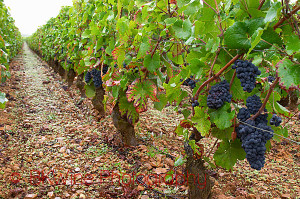 Burgundy has a new village appellation. Bourgogne Vézelay has been upgraded to AOP Vézelay. The new village appellation has 70 hectares planted with chardonnay, the only grape permitted. Vézelay is located 50 kilometres south of Chablis and is more famous for its beautiful basilica than its wine.
Burgundy has a new village appellation. Bourgogne Vézelay has been upgraded to AOP Vézelay. The new village appellation has 70 hectares planted with chardonnay, the only grape permitted. Vézelay is located 50 kilometres south of Chablis and is more famous for its beautiful basilica than its wine.
Burgundy has also a new regional appellation: Bourgogne Côte d’Or. The overall appellation “Bourgogne” now has 14 additional geographical origins that can be added on the label. Some of the more famous ones are Bourgogne Côte Chalonnaise, Bourgogne Haute Côte de Beaune, Bourgogne Haute Côte de Nuits. And now, Bourgogne Côte d’Or has joined them. Burgundy has more appellations than any other French wine region, over 100. Read more france3-regions.francetvinfo.fr..
Phenomenal 2017 vintage in California
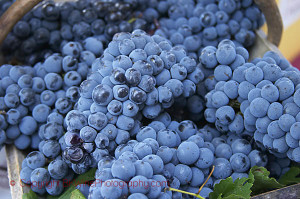 We have received a harvest report from California that says that 2017 will be a very good vintage. The fires in October have not affected the quality of the wines. Napa Valley, Sonoma and Mendocino were worst affected by the fires. These three regions grow only 12% of California grapes and 85-90% of the grapes had been harvested before the fires.
We have received a harvest report from California that says that 2017 will be a very good vintage. The fires in October have not affected the quality of the wines. Napa Valley, Sonoma and Mendocino were worst affected by the fires. These three regions grow only 12% of California grapes and 85-90% of the grapes had been harvested before the fires.
The vintage has been more influenced by the fact that the five-year drought in California finally ended this winter. Most of the wine districts received sufficient rain for the vines to recover. However, the heat wave at the end of August and beginning of September resulted in some producers having a low yield. Overall, the report talks of a vintage of a very high quality. Read more: discovercaliforniawines.com
IGP Pays d’Oc celebrates 30 year anniversary
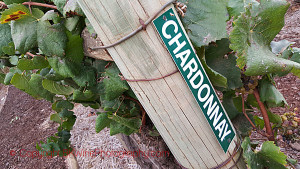 A success story in the Languedoc celebrates 30 years. Robert Skalli and Jacques Gravegeal created IGP Pays d’Oc in 1987. At the time it was called Vin de Pays d’Oc. It became the most successful of all the “vin de pays” wines (that have changed name to IGP). But the success was not obvious from the start. Most people, including INAO, were sceptical of a category that covered the entire Languedoc region (“Pays d’Oc”) and that wanted to put the grape variety on the label. But Jacques Gravegeal was inspired by California and he firmly believed in this “un-French” concept.
A success story in the Languedoc celebrates 30 years. Robert Skalli and Jacques Gravegeal created IGP Pays d’Oc in 1987. At the time it was called Vin de Pays d’Oc. It became the most successful of all the “vin de pays” wines (that have changed name to IGP). But the success was not obvious from the start. Most people, including INAO, were sceptical of a category that covered the entire Languedoc region (“Pays d’Oc”) and that wanted to put the grape variety on the label. But Jacques Gravegeal was inspired by California and he firmly believed in this “un-French” concept.
He was absolutely right. Vin de Pays d’Oc was an immediate success on the export market. The most important grapes today are Merlot, Cabernet Sauvignon, Chardonnay, Sauvignon Blanc and Syrah. These account for 80-85% of the volume. Merlot itself accounts for 25%. Read more: vitisphere.com
Cabernet Sauvignon more and more popular in Washington
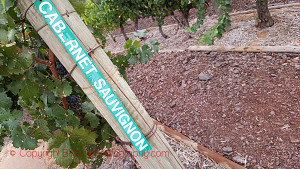 No, this is not about preferences in the White House. We are talking about wine production in Washington State, north of California and Oregon. Cabernet Sauvignon has grown significantly, from 560 hectares in the early 1990s to today’s 7,500 hectares. Washington was originally known for its white wines with fine acidity and crispness made from grapes like Riesling, Semillon, Gewurztraminer and Sauvignon Blanc. 25 years ago, the white grapes dominated; Washington’s entire surface under vine was small, 4,500 hectares in total with 2800 hectares of white grapes and 1,600 hectares of red.
No, this is not about preferences in the White House. We are talking about wine production in Washington State, north of California and Oregon. Cabernet Sauvignon has grown significantly, from 560 hectares in the early 1990s to today’s 7,500 hectares. Washington was originally known for its white wines with fine acidity and crispness made from grapes like Riesling, Semillon, Gewurztraminer and Sauvignon Blanc. 25 years ago, the white grapes dominated; Washington’s entire surface under vine was small, 4,500 hectares in total with 2800 hectares of white grapes and 1,600 hectares of red.
Today vineyard surface is much larger, 22,500 hectares in total. Red grapes dominate with more than 14,000 ha. Merlot is in second place with 3,600 ha and Syrah in third with approximately 1,800 ha. Among the white grapes, Pinot Gris has increased immensely. Viognier, Riesling and Roussanne have all made small increases but Sémillon and Gewurztraminer are decreasing. Read more winebusiness.com
Beaujolais Nouveau, still going strong, but not quite so strong
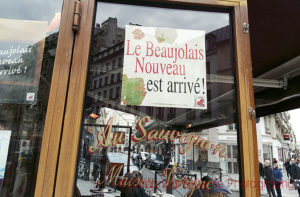 Many believe that the hype around Beaujolais Nouveau is over. But that’s not entirely true. It is not the same hysteria as it was 30 or 40 years ago when the new wine was released, the third Thursday in November. But in 2016, Beaujolais Nouveau sold for 22 million euros over 10 days. That is 85% of the total production of Beaujolais Nouveau and 25% of the total production of Beaujolais. Quite impressive sales figures. 2017 is expected to give the same result. But sales are declining, down 62% since 2004 (493,700 hl in 2004 and 188,400 hl 2016). Maybe a good thing? To give more focus on “real” Beaujolais?
Many believe that the hype around Beaujolais Nouveau is over. But that’s not entirely true. It is not the same hysteria as it was 30 or 40 years ago when the new wine was released, the third Thursday in November. But in 2016, Beaujolais Nouveau sold for 22 million euros over 10 days. That is 85% of the total production of Beaujolais Nouveau and 25% of the total production of Beaujolais. Quite impressive sales figures. 2017 is expected to give the same result. But sales are declining, down 62% since 2004 (493,700 hl in 2004 and 188,400 hl 2016). Maybe a good thing? To give more focus on “real” Beaujolais?
The first Beaujolais Nouveau was sold in 1951.
These fruity and juicy wines can be really refreshing. Choose a good producer though, Foillard, JP Brun, Domaine du Vissoux, JM Burgaud or others. Read more: rayon-boissons.com
French Southwest named Wine Region of the Year by the Wine Enthusiast
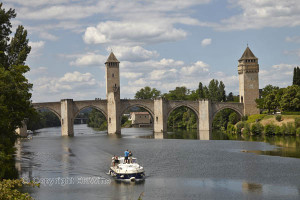 Southwest, or Sud-Ouest in French, has been named ”Wine Region of the Year 2017” by the American wine magazine Wine Enthusiast. Congratulation! A well-deserved award to a wine region that makes a host of interesting and unusual wines. Southwest is really a wine region for the curious wine lover. The region has 47,000 hectares of vineyards divided between 29 AOP and 13 IGP. It stretches from the Atlantic coast south of Bordeaux down to the Pyrenees. Some famous appellations are Madiran, Cahors, Bergerac, Gaillac and Jurançon. All are absolutely worth exploring although not all of them are easy to find on export markets. Read more: france-sudouest.com
Southwest, or Sud-Ouest in French, has been named ”Wine Region of the Year 2017” by the American wine magazine Wine Enthusiast. Congratulation! A well-deserved award to a wine region that makes a host of interesting and unusual wines. Southwest is really a wine region for the curious wine lover. The region has 47,000 hectares of vineyards divided between 29 AOP and 13 IGP. It stretches from the Atlantic coast south of Bordeaux down to the Pyrenees. Some famous appellations are Madiran, Cahors, Bergerac, Gaillac and Jurançon. All are absolutely worth exploring although not all of them are easy to find on export markets. Read more: france-sudouest.com
The book to discover South Africa: New edition of Platter’s Wine Guide
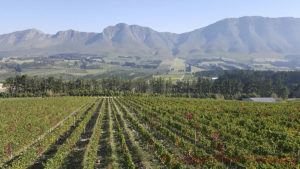 The 38th edition of the Platter’s Wine Guide of South African wines has just been launched. This wine-bible gives you, in a handy format, all you need to know about South African wines. Or at least a lot. It means a lot to a winery to have a wine in the guide with four or five stars. Being named “Winery of the year” is great honour for a South African producer. Platter’s has a good reputation in the wine industry.
The 38th edition of the Platter’s Wine Guide of South African wines has just been launched. This wine-bible gives you, in a handy format, all you need to know about South African wines. Or at least a lot. It means a lot to a winery to have a wine in the guide with four or five stars. Being named “Winery of the year” is great honour for a South African producer. Platter’s has a good reputation in the wine industry.
Stars are awarded to wines, not wineries. The estates get a brief review, sometimes longer depending on the importance and size of the estate. The guide also specifies “hidden gems” and wines that are especially good value for money. The wines are not tasted blind. The reason is that the guide wants to judge the wines based on the producers’ goals and intentions, what kind of wines they want to make, how they work, etc. The guide also wants to follow the producers over the years and see how they develop. Warmly recommended for the curious wine drinker.
Join us on the wine tour to South Africa in November and you will have ample opportunities to discover these delicious wines on site with the winemakers.
France’s complicated vintage 2017, told by a wine producer
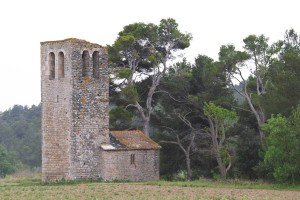 “2017 will go down in history as a very complicated vintage for more or less all French wine regions,” says Graham Nutter in Minervois. He contacted us to tell us a little bit about what happened at his Domaine St. Jacques d’Albas during the year. It all started well, which he was happy about because the volume was 40% less than normal in 2016. Rain was abundant during January to March. Then came a beautiful March and spring started early. It was unusually warm and with plenty of water in the soil the vines sprung into life early. The beautiful weather continued in April. The year started to look promising.
“2017 will go down in history as a very complicated vintage for more or less all French wine regions,” says Graham Nutter in Minervois. He contacted us to tell us a little bit about what happened at his Domaine St. Jacques d’Albas during the year. It all started well, which he was happy about because the volume was 40% less than normal in 2016. Rain was abundant during January to March. Then came a beautiful March and spring started early. It was unusually warm and with plenty of water in the soil the vines sprung into life early. The beautiful weather continued in April. The year started to look promising.
At the end of April cold nights and morning frost hit vineyards throughout France (and in other countries in Europe). St Jacques d’Albas was lucky; its vineyards are a bit higher up and suffered only a little. Then came the heat wave in June. No problem, Graham thought, we always have some rain in July/August. But not a drop this year. The result in the end was small grapes with little juice and another year with 40% lower volume than normal. But the quality is very satisfactory. Graham compares with 2003 but believes that 2017 is riper and with higher acidity. He is in fact very pleased with everything except with the volume. Two years in a row with low yield is tough. Some have had an even worse year though, with both springtime rot and hail. More on St Jacques d’Albas: chateaustjacques.com
Features
Features that we have published during the past month, with lots of reading for you.
If only you could read this Champagne book
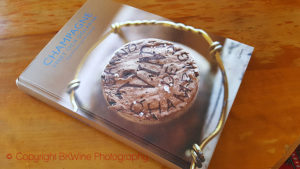 With regrets I have to tell you that you probably cannot read this rather unique book on Champagne. It is our latest book, number nine, but it is so far only available in Swedish. What is unique with it is that it is dedicated to the independent producers, the “champagnes de vignerons”, or RMs (récoltants-manipulants) as they are sometimes called. But it is also a detailed description of what champagne is and how it is made (unusual this too). “Well-written, interesting and inspiring” were the comments from a reader.
With regrets I have to tell you that you probably cannot read this rather unique book on Champagne. It is our latest book, number nine, but it is so far only available in Swedish. What is unique with it is that it is dedicated to the independent producers, the “champagnes de vignerons”, or RMs (récoltants-manipulants) as they are sometimes called. But it is also a detailed description of what champagne is and how it is made (unusual this too). “Well-written, interesting and inspiring” were the comments from a reader.
Read more about that on BKWine Magazine: About the champagne book: “Well-written, interesting and inspiring”.
International launch of The Penfolds Collection
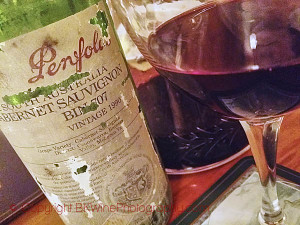 The Australian wine producer Penfolds has since 3 years launched the “wines of the year”, the year’s new launches, at one and the same time, coordinated all over the world. This year, 2017, this happened on Thursday, October 19th. When Penfolds’ representatives presented a number of this year’s wines in Stockholm, BKWine’s reporter Wilhelm Arnör was of course present.
The Australian wine producer Penfolds has since 3 years launched the “wines of the year”, the year’s new launches, at one and the same time, coordinated all over the world. This year, 2017, this happened on Thursday, October 19th. When Penfolds’ representatives presented a number of this year’s wines in Stockholm, BKWine’s reporter Wilhelm Arnör was of course present.
Read more on this in Wilhelm Arnör’s article on BKWine Magazine: The Penfolds Collection 2017, seven wines from Australia.
Château Bernateau In Saint Emilion: Great Wines With Organic Growing And High-End Equipment | Britt on Forbes
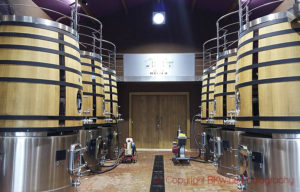 Bordeaux is not only about big, famous châteaux in Médoc. If you cross the rivers to the right bank you will find a myriad of smaller chateaux, often with less than 10 hectares of vineyards. Often family owned, like the remarkable Château Bernateau in Saint Emilion. The chateau owners are Pierrick and Karen Lavau. Pierrick is the winemaker and from the estate’s 7.5 hectares he aims at both the highest possible quality and personal character. The famous right bank limestone helps. “It gives a certain saltiness, a freshness to the wines”, says Pierrick.
Bordeaux is not only about big, famous châteaux in Médoc. If you cross the rivers to the right bank you will find a myriad of smaller chateaux, often with less than 10 hectares of vineyards. Often family owned, like the remarkable Château Bernateau in Saint Emilion. The chateau owners are Pierrick and Karen Lavau. Pierrick is the winemaker and from the estate’s 7.5 hectares he aims at both the highest possible quality and personal character. The famous right bank limestone helps. “It gives a certain saltiness, a freshness to the wines”, says Pierrick.
Read more on this on BKWine Magazine on the article on Forbes: Organic and high-tech wines in Saint Emilion: Chateau Bernateau | Britt on Forbes.
Join us on the wine tour to Bordeaux in April and you will taste this and many other delicious Bordeaux wines.
8 Barolos from 1970
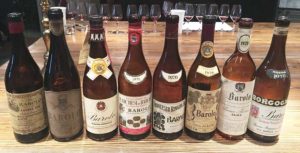 “I had the opportunity to try eight barolos from 1970, recently bought, ranging in price from 50 euro to 100 euro, in a German online store. The Barolo 1970 vintage came at a period of transition. Chemical treatments in the vineyards were still a novelty. The Nebbiolo wines had traditionally been built for a long future, with months of maceration and years of patient ageing in the botti (large oak barrels).”
“I had the opportunity to try eight barolos from 1970, recently bought, ranging in price from 50 euro to 100 euro, in a German online store. The Barolo 1970 vintage came at a period of transition. Chemical treatments in the vineyards were still a novelty. The Nebbiolo wines had traditionally been built for a long future, with months of maceration and years of patient ageing in the botti (large oak barrels).”
Read more on this extraordinary tasting in Henrik Stadler’s article on BKWine Magazine: 8 Barolos from 1970.
Wine tours
Some information about current and future wine tours with BKWine.
Bordeaux with old quarries and fashion-designed cellars | wine tour
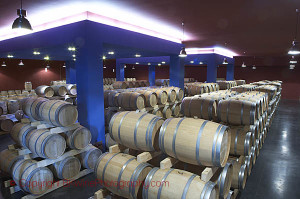 Jacques, our host at Château Franc Mayne in Saint Emilion, opens the cellar door and tells us to stay close to him, making sure to count how many we are. The cellar is actually an old, enormous limestone quarry. It’s easy to get lost in here. (He’s supposed to count us when we leave too, but somehow that’s often forgotten at the tasting.) Already the Romans extracted stones here to build houses, and it continued for hundreds of years. The houses, churches, palaces, monasteries of Bordeaux and Saint Emilion are built with this beautiful limestone. In a corner, the oak barrels hide where the wine is going to rest for a year. Only a small part of the cellar is used for the barrels. It is a large cellar and the château’s production is small.
Jacques, our host at Château Franc Mayne in Saint Emilion, opens the cellar door and tells us to stay close to him, making sure to count how many we are. The cellar is actually an old, enormous limestone quarry. It’s easy to get lost in here. (He’s supposed to count us when we leave too, but somehow that’s often forgotten at the tasting.) Already the Romans extracted stones here to build houses, and it continued for hundreds of years. The houses, churches, palaces, monasteries of Bordeaux and Saint Emilion are built with this beautiful limestone. In a corner, the oak barrels hide where the wine is going to rest for a year. Only a small part of the cellar is used for the barrels. It is a large cellar and the château’s production is small.
On our Bordeaux trip, old quarries are mixed with modern and designed cellars that seem to belong in fashion magazines. We taste a lot of wine on our wine tours to Bordeaux but the visual impressions are also important. In the evenings you will enjoy the spectacular city of Bordeaux. Our Bordeaux wine tour takes place in April and October.
We have written a book about the wines and wine regions of Bordeaux, but it is only available in Swedish for the moment.
South Africa in November! Fantastic white wines (and red!), whale watching and much more | wine tour
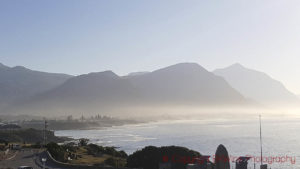 For a long time, the white grapes dominated in South Africa’s vineyards. Much of these white wines were distilled into brandy. Now it’s different. South Africa is now a very exciting wine country for white wines. Chenin Blanc (formerly called Steen) is a classic “South African” grape and although its surface has decreased since the late 1990s it is still significant. And some delicious wines are made from this grape. And also from Sauvignon Blanc from the cool south coast of Western Cape, Chardonnay, Semillon, Roussanne, Viognier, Riesling and more. There is of course also a wealth of outstanding reds. In fact, South Africa has around 100 different grape varieties, white and red. That is a lot considering the country’s total vineyard surface of 100,000 hectares.
For a long time, the white grapes dominated in South Africa’s vineyards. Much of these white wines were distilled into brandy. Now it’s different. South Africa is now a very exciting wine country for white wines. Chenin Blanc (formerly called Steen) is a classic “South African” grape and although its surface has decreased since the late 1990s it is still significant. And some delicious wines are made from this grape. And also from Sauvignon Blanc from the cool south coast of Western Cape, Chardonnay, Semillon, Roussanne, Viognier, Riesling and more. There is of course also a wealth of outstanding reds. In fact, South Africa has around 100 different grape varieties, white and red. That is a lot considering the country’s total vineyard surface of 100,000 hectares.
In South Africa there is a great variety of wine styles and breath-taking landscapes. Come and enjoy all this on our wine tour to South Africa in the fall of 2018. We will also have time for whale watching in Hermanus on the south coast! The South Africa wine tour will take place in November 2018.
Don’t be an egoist! Share with your friends and other wine enthusiasts! Forward the Brief to your friends! Suggest that they sign up for a free subscription !
© Copyright BKWine







